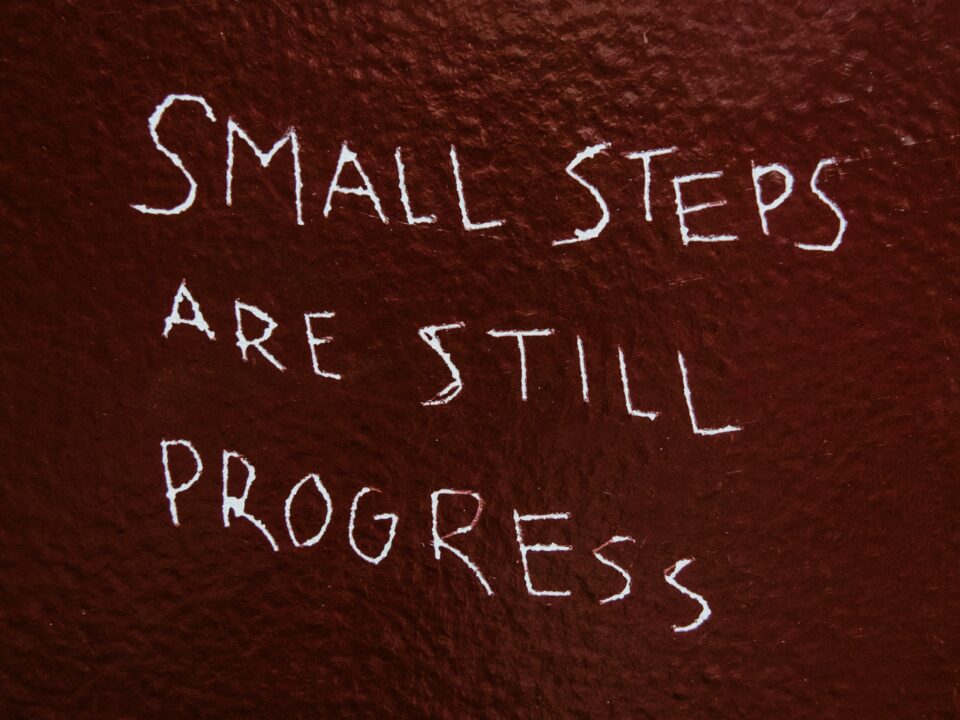
Understanding change
December 8, 2022
The difference between pressure and stress for peak performance
February 9, 2023How to support your team through organisational change
No matter how well you’ve planned organisational change, the tricky bit is engaging your teams to contribute and embrace new ways of working.
New technologies. Changing customer preferences. Competitors eating up market share. The spiralling cost of doing business. Standing still isn’t an option for any of us.
In a recent interview with the CBI, dealing with change is cited as the number one priority for leaders right now. So, how can you support and coach people through organisational change to influence a positive outcome?
Based on our experience of coaching people, we help you rethink how you engage your team to embrace change more readily.
Spotting and understanding reactions to change
People’s initial reaction to change is based on emotion rather than logic. Professor Steve Peters developed the Chimp Model of how our mind works. He explains three parts of the brain, of which the ‘inner chimp’, the impulsive, emotional part, thinks and acts for us before we have chance to think things through if we let it.
In our last blog, we explain the Kübler-Ross Change Curve model to help you spot and understand these different emotional reactions (link) at each stage of the journey.
How can you handle people’s reactions to change?
As a manager you have a role to lead your team through change. You are a trusted source of information and your team will look to you to share information about what’s happening. Here’s how you can support and coach your team through each stage of the Kübler-Ross Change Curve.
Shock
When changed is introduced, transparent two-way communication is important to help people understand what is happening and why, although don’t overwhelm them with too much detail at this stage.
Give people time to process the information, don’t try to move them along the change curve quicker than they are prepared to go.
After an announcement, it’s common for managers to say ‘my door’s always’ open when actually they’re tied up in meetings for the rest of the week, sending an unintended message they don’t really care. Remain visible and available to listen. Empathise and understand what your team’s concerns are. Answer any questions and invite your team to contribute.
Remember as a manager you may have been involved in developing the change agenda, or privy to information earlier, meaning you’re further along the change curve. You need to step back and walk alongside people at the start of their journey.
Denial and frustration
As people start reacting to what’s happening, let them get things off their chest. Try to understand what they’re in denial or angry about and why. There’s a clear benefit to handling conflict early, not least avoiding stress and impact on morale. Unpick the problem and you might find the conversations are productive and you learn from them.
Give as much information as possible about what people might expect to see happen and when. Clarify facts and dispel rumours. Don’t dismiss people’s feelings; how they’re feeling is very real to them.
Depression
As change is seen as inevitable, energy and morale are low. It’s not an easy time for your team. As a manager, understand what they’re thinking and why. Blanket messages are unlikely to motivate people, they may need encouraging to see opportunities for them personally as well as the team.
If you have team members further up the change curve, use them as advocates to help colleagues navigate change, rather than allowing those in the depressed stage to pull others down.
There’s often a tendency to focus efforts on the biggest resistors to change. Clients often ask how long should you let people remain in the depression stage. If you get to a point where two of a team of eight for example are refusing to change, it’s time for a difficult conversation to understand if there is any willingness to engage. A better outcome for everyone may be for them to seek opportunities elsewhere.
Experimentation
As people start finding their own way of doing things it can become chaotic. Remain supportive. Set up regular touch points to give guidance and support to ensure people keep progressing in the right direction.
Praise good behaviour and give constructive feedback where needed – never criticise.
Decision and acceptance
As people start to align to new ways of working, we advise setting short term objectives for a period of between one week and one month to set expectations of what good looks like. Continue to thank and praise people. Celebrate successes however small.
Integration
As people embed new ways of working you shouldn’t become complacent. People may still need regular interaction to remain on track. We advise setting objective looking 3-6 months ahead once at this stage.
People can also slip back, particularly if you still have colleagues who have not yet reached this stage. There’s a danger of taking your eye off the ball with colleagues at integration stage, as you focus on supporting those lower down the curve. This is a particular risk if more change is added – people may not embrace a different change in the same way or may become apathetic.
We’ve explained the Kübler-Ross Change Curve model giving you a great tool to understand emotional reactions and manage people through organisational change. If you need support, Cube Learning and Development delivers bespoke programmes to help manage change. For a no-obligation chat about this and our other training, call Chris Burton on 07879 602002.
Feature image courtesy of Unsplash [Karan Mandre]




